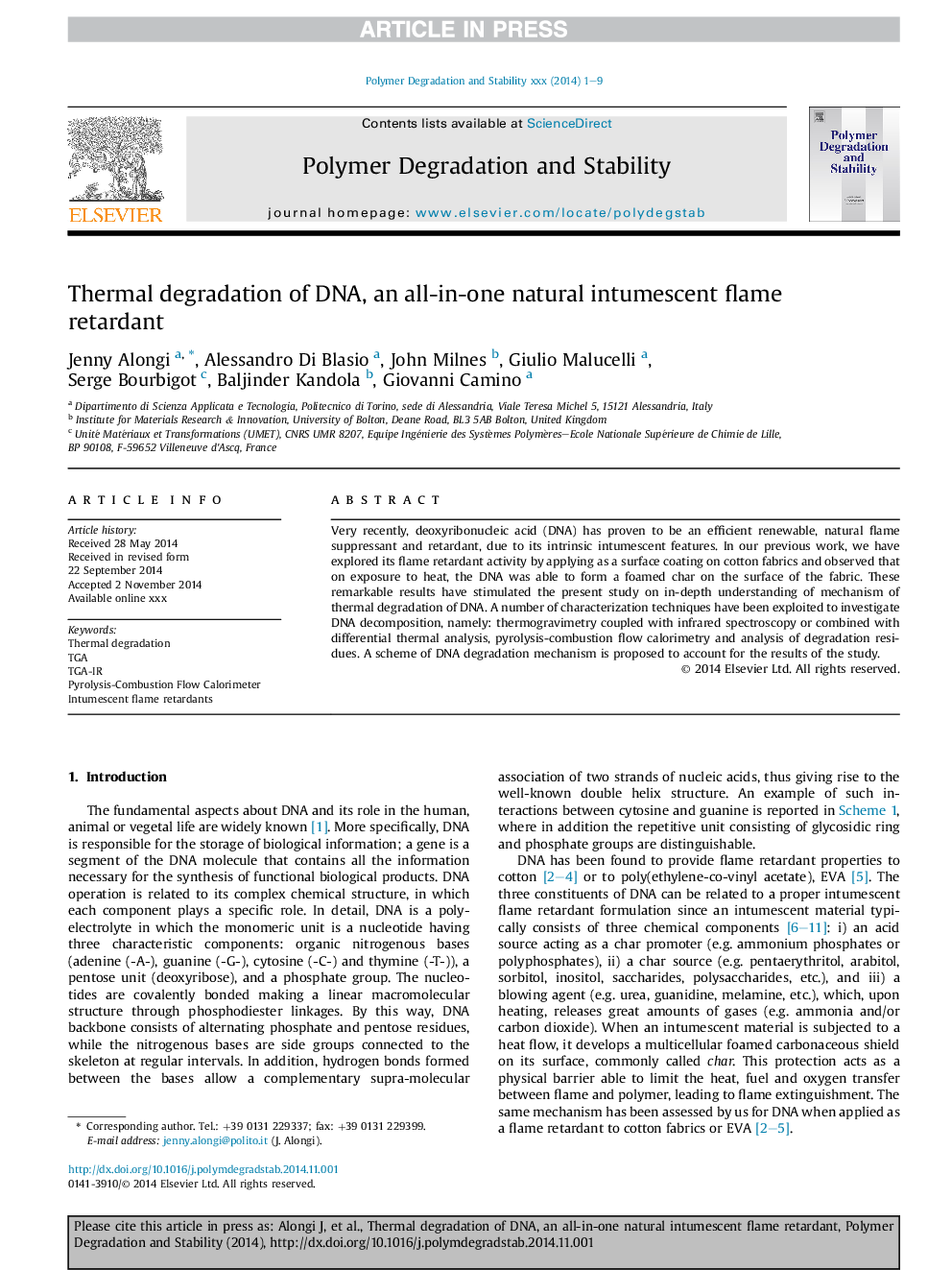| Article ID | Journal | Published Year | Pages | File Type |
|---|---|---|---|---|
| 5201602 | Polymer Degradation and Stability | 2015 | 9 Pages |
Abstract
Very recently, deoxyribonucleic acid (DNA) has proven to be an efficient renewable, natural flame suppressant and retardant, due to its intrinsic intumescent features. In our previous work, we have explored its flame retardant activity by applying as a surface coating on cotton fabrics and observed that on exposure to heat, the DNA was able to form a foamed char on the surface of the fabric. These remarkable results have stimulated the present study on in-depth understanding of mechanism of thermal degradation of DNA. A number of characterization techniques have been exploited to investigate DNA decomposition, namely: thermogravimetry coupled with infrared spectroscopy or combined with differential thermal analysis, pyrolysis-combustion flow calorimetry and analysis of degradation residues. A scheme of DNA degradation mechanism is proposed to account for the results of the study.
Related Topics
Physical Sciences and Engineering
Chemistry
Organic Chemistry
Authors
Jenny Alongi, Alessandro Di Blasio, John Milnes, Giulio Malucelli, Serge Bourbigot, Baljinder Kandola, Giovanni Camino,
